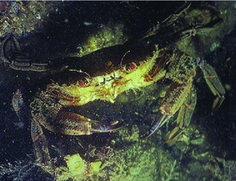
The shipwreck off Duart Castle was first located in 1979 and is now one of Scotland's seven designated Historic Marine Protected Areas, which have statutory protection as a statement of their significance. It is a rare example of a shipwreck site that can confidently be assigned to the Cromwellian period in Britain (1649–1660), and is part of a wider heritage of seventeenth-century British shipwrecks lost in campaigns against castles on the Scottish west coast (the Mingary Castle wreck and the Dartmouth of 1690 are similarly designated).
Less certain is the wreck's actual identity. Understandably, therefore, this exceptionally well-illustrated book opens with the historical background to sea power in western Scotland as a framework for the vessel's identification, before introducing the wreck itself in Chapter 2. It seems a shame, however, that so significant a site is not placed firmly at the beginning of the book, and the presentation of the evidence loses some clarity in the cross-referencing between the first two chapters. For example, both the Mingary wreck and the Dartmouth are individually mentioned as part of the historical framework, but are not brought together with the Duart wreck to contextualise a unique collection of wreck sites specific to western Scotland.
Only one historical source yielded evidence for the identity of the wreck that fitted the archaeological criteria (pp. 29–30), an account of three vessels lost on a Cromwellian expedition against the Earl of Glencairn's Royalist uprising in 1653. The source of the ballast on the wreck site most closely fits the documented voyage details of one of these three: the Swan. The origins and identity of this Swan, with two vessels of this name in the Cromwellian navy in the right context at the right time, comprise the key questions that Chapter 2 seeks to address, and it is rightly made clear that the available evidence to answer these interlinked questions does not put the identification beyond doubt. I would have liked further discussion of the paucity of contemporaneous evidence. Certainly in England at least, wreck events outside a naval context are under-represented in surviving sources for the Civil War and Interregnum compared to preceding and succeeding periods, raising for this reader the possibility that a wreck for which records have not been recovered could also be a candidate for this site. Furthermore, Swan is a common name for ships from that period and there may be other vessels of this name now lost to history.
Chapter 3 covers the archaeological investigations with clear, judiciously chosen and well-captioned illustrations, characteristic of the volume as a whole. In fact, one of its great pleasures is to see maritime archaeological practice so comprehensively and informatively illustrated, a particular strength commending it to the specialist and general reader alike.
Chapter 4, considering wreck formation processes from deposition to site evolution, evolves naturally out of the previous chapter. Its particular focus is on a relatively under-explored aspect of maritime archaeological study: the influence of biological transport mechanisms on the transformation and dispersal of the site. The accompanying photographs also break new ground in the field of marine archaeology by demonstrating that it is possible to use good images of undersea life in a fashion clearly relevant to the text and to the evolution of the site, an approach I cannot recommend too highly, having been exasperated all too often by an unaccountable preference for fish over archaeological features!
Chapter 5 focuses on the ship's structure and layout, followed by Chapters 6 and 7 on major features of the vessel, respectively considering its armament and its operation and management. Of great interest are the carved timbers discussed in section 5.3, whose iconography is compared with both contemporary architectural decorations from Scottish contexts (although these are not illustrated) and comparable features on the heavily decorated Vasa warship, wrecked in Stockholm in 1627. Surprisingly, the Duart wreck's helmeted and moustachioed warrior carving is not compared with his counterpart on the early seventeenth-century Swash Channel rudder (Poole, England), raised in a well-publicised operation in 2013.
Smaller finds relating to shipboard life are covered in Chapters 8 and 9, and human remains in Chapter 10. Some of the smaller artefacts demonstrate a significant contribution to the wider understanding of their particular object types, such as tappit hens (9.1) and clay pipes (9.4), allowing the reader to develop a clear and detailed understanding of each object.
The conclusion sets the wreck in its context as a purpose-built warship with auxiliary oar capacity, which was sensibly designed compared to the ill-conceived Lion's Whelps of Charles I's navy, and which can readily be placed in the context of seventeenth-century Scottish maritime operations. The conclusion, however, reflects the opening chapter in not realising the potential of a still wider comparative context, neglecting to mention the aforementioned Swash Channel wreck and also the London wreck of 1665, built in the Cromwellian period and recovered in the Thames estuary. The latter is the most obvious parallel in terms of period, context and significance as a designated shipwreck site (under the 1973 Protection of Wrecks Act), but is relegated to an appendix entry as the site of a comparable find for a latchet shoe.
Another element that could usefully have been included is an account of the current management of the site, including its designation history. The latter is somewhat lost in the acknowledgements, not an obvious place to discuss a key element of the site narrative, highlighting its significance to Scottish, British and international maritime archaeology. Yet the sense of the continuing narrative of a shipwreck site is often omitted in the academic literature, so the template for monographs in the field is still evolving. Nevertheless, Colin Martin and the Society of Antiquaries of Scotland are to be congratulated on helping to improve that template by bringing the Duart Castle wreck to wider attention through this beautifully illustrated and clearly and accessibly written volume available at a sensible price.


